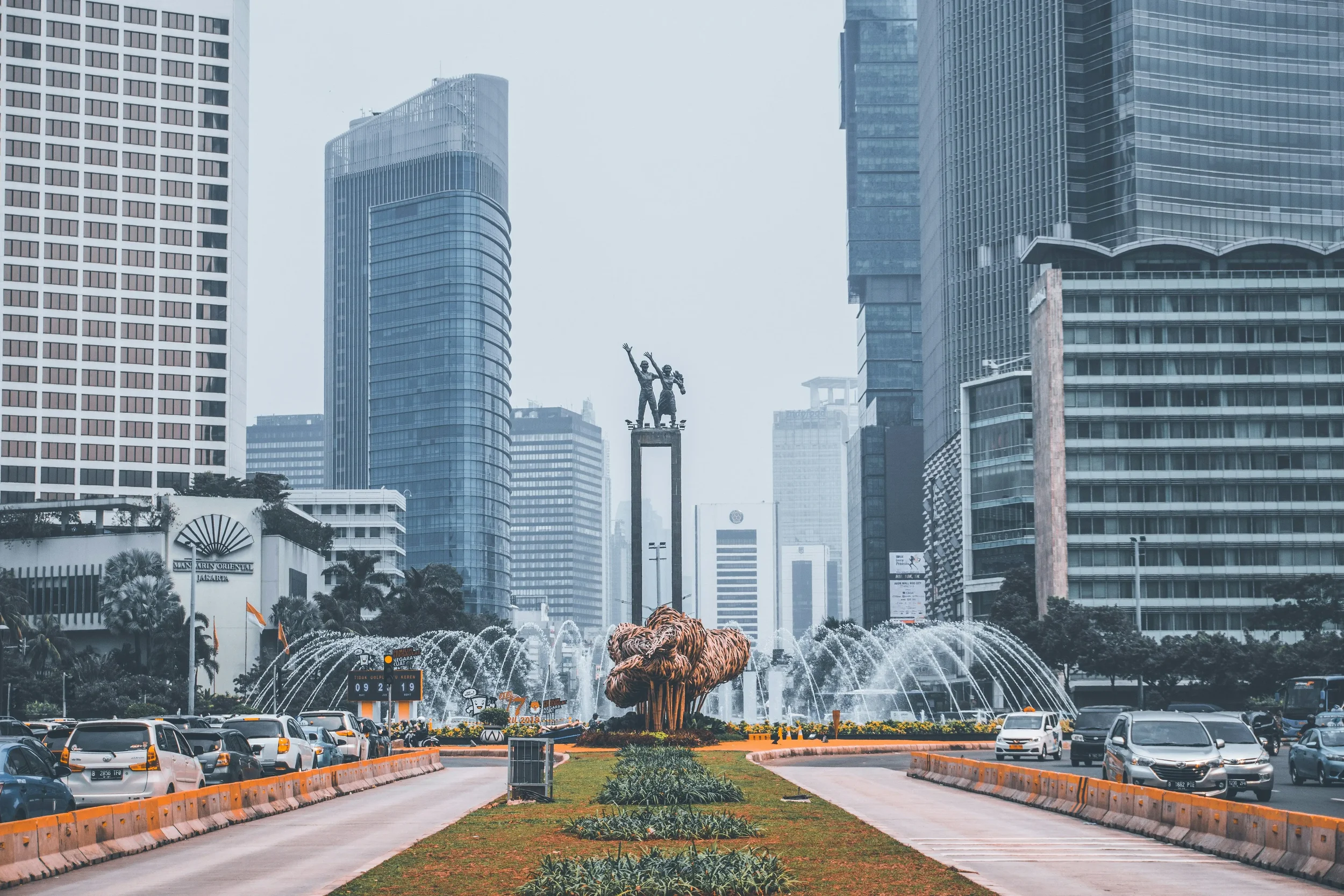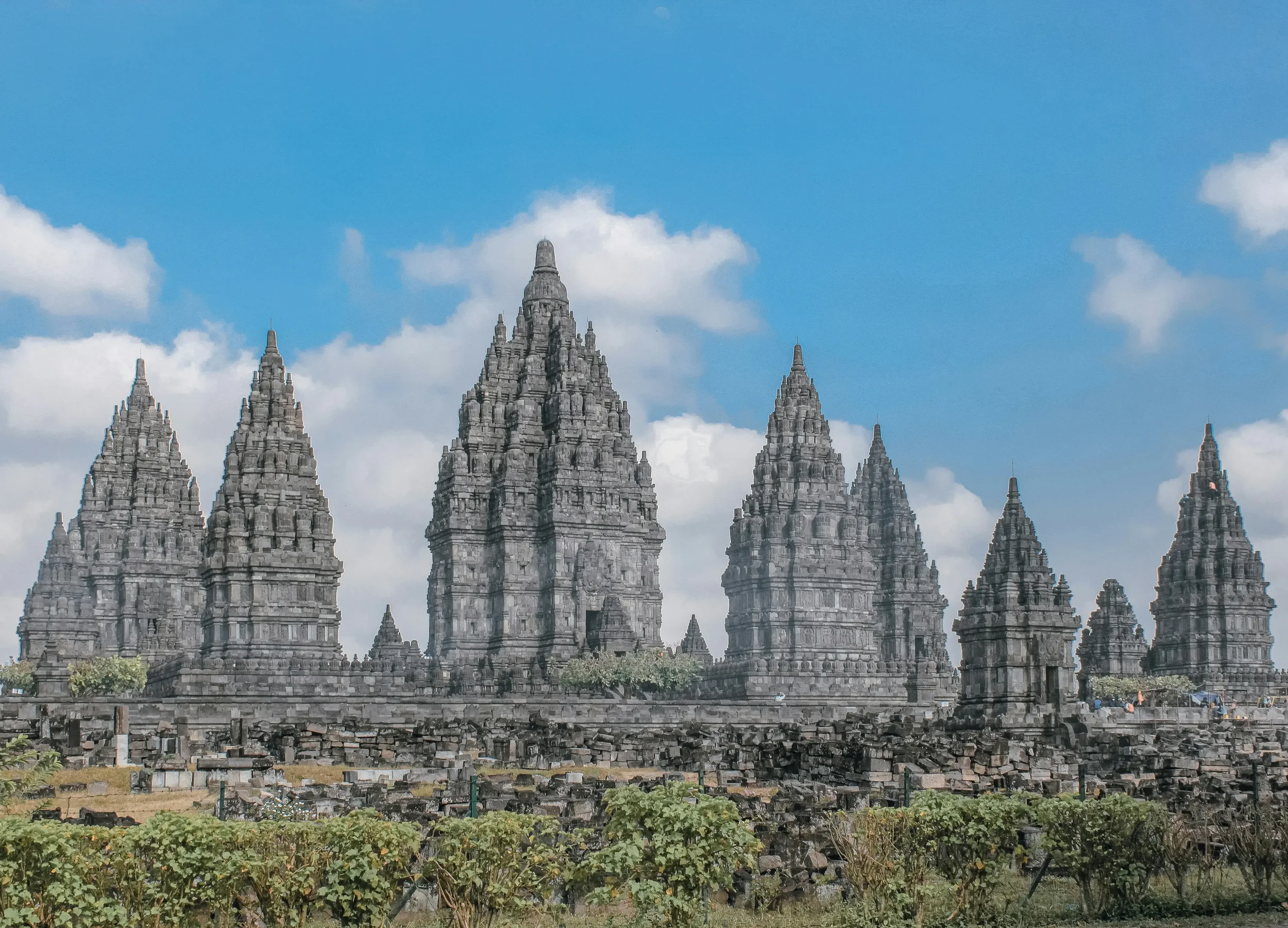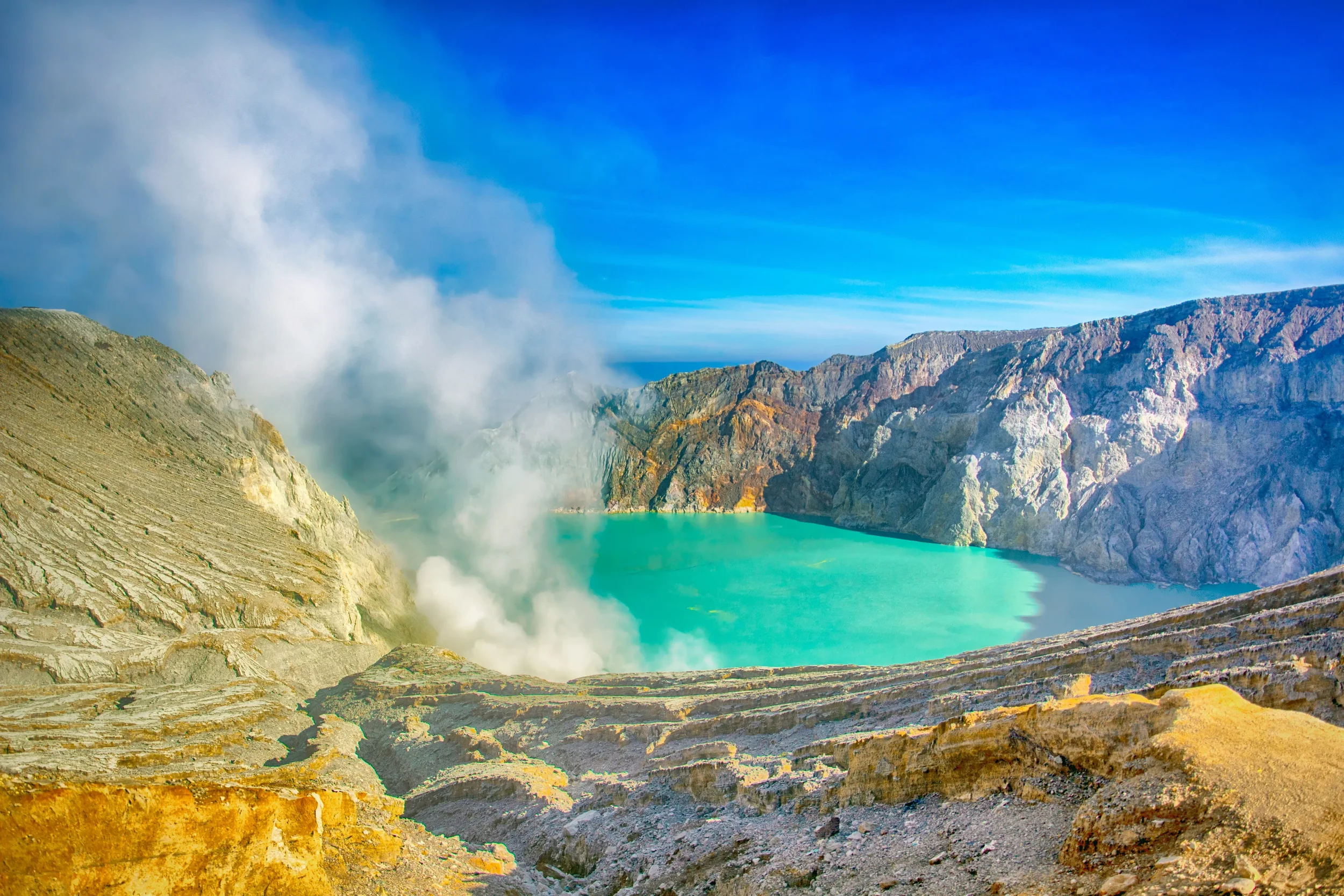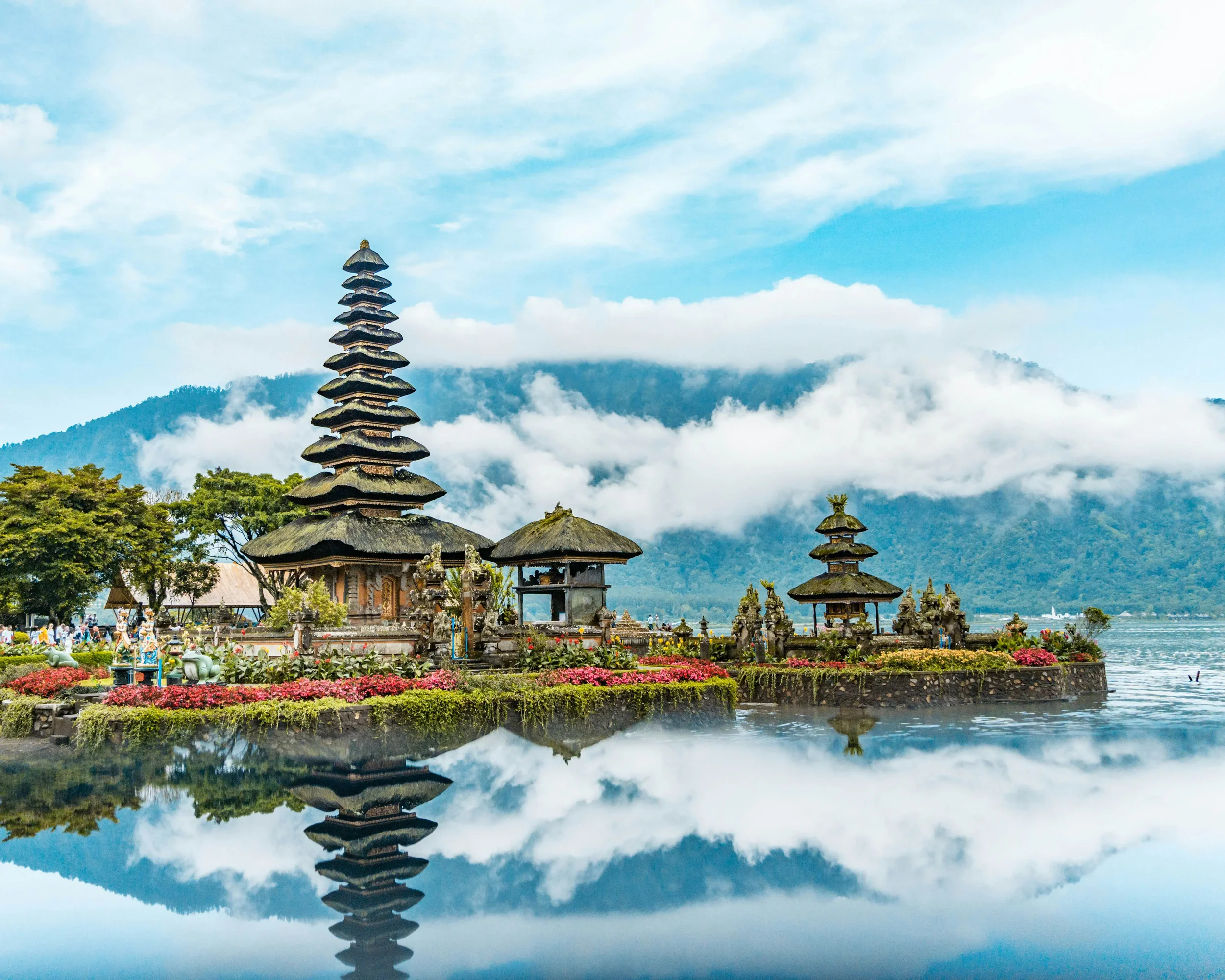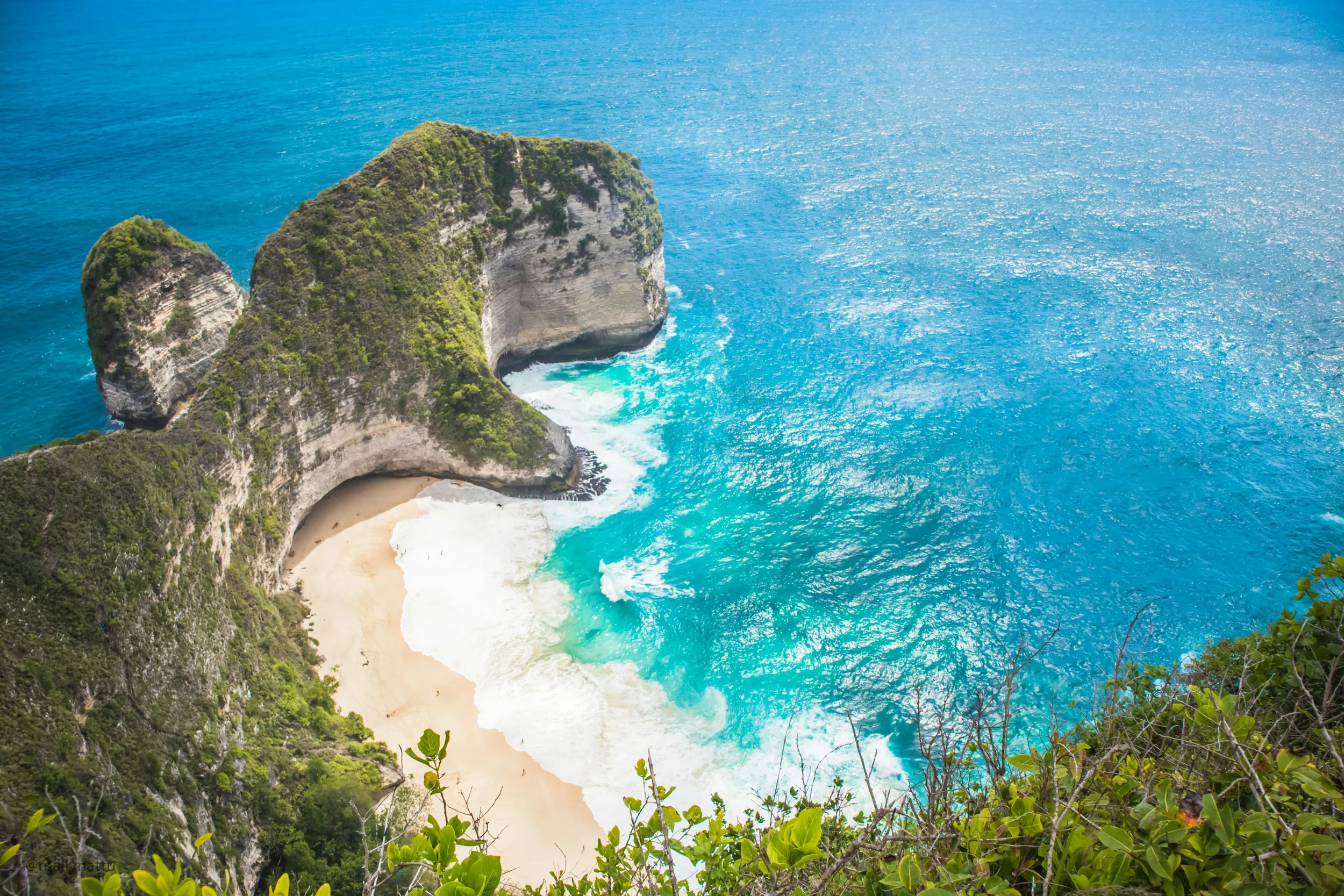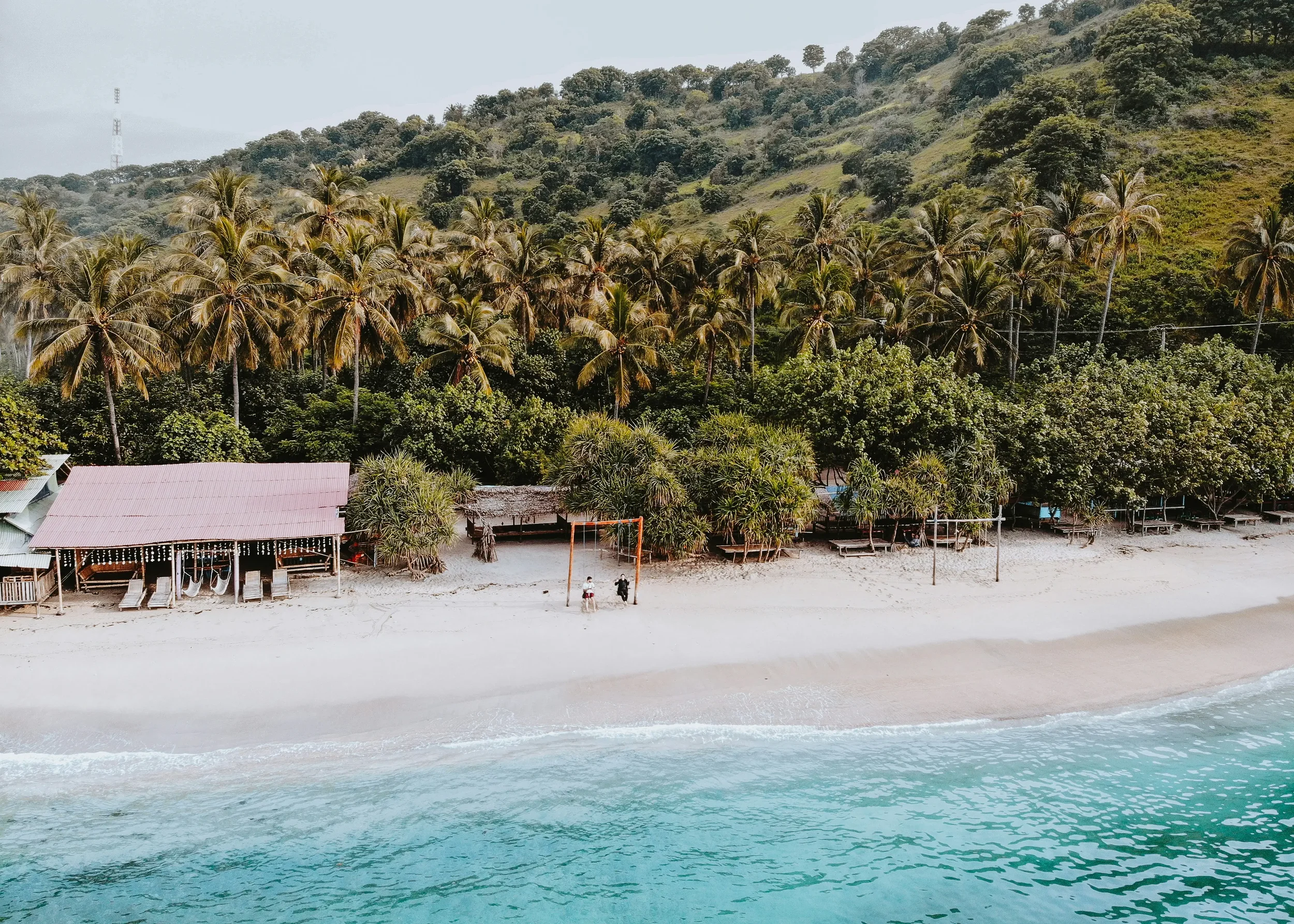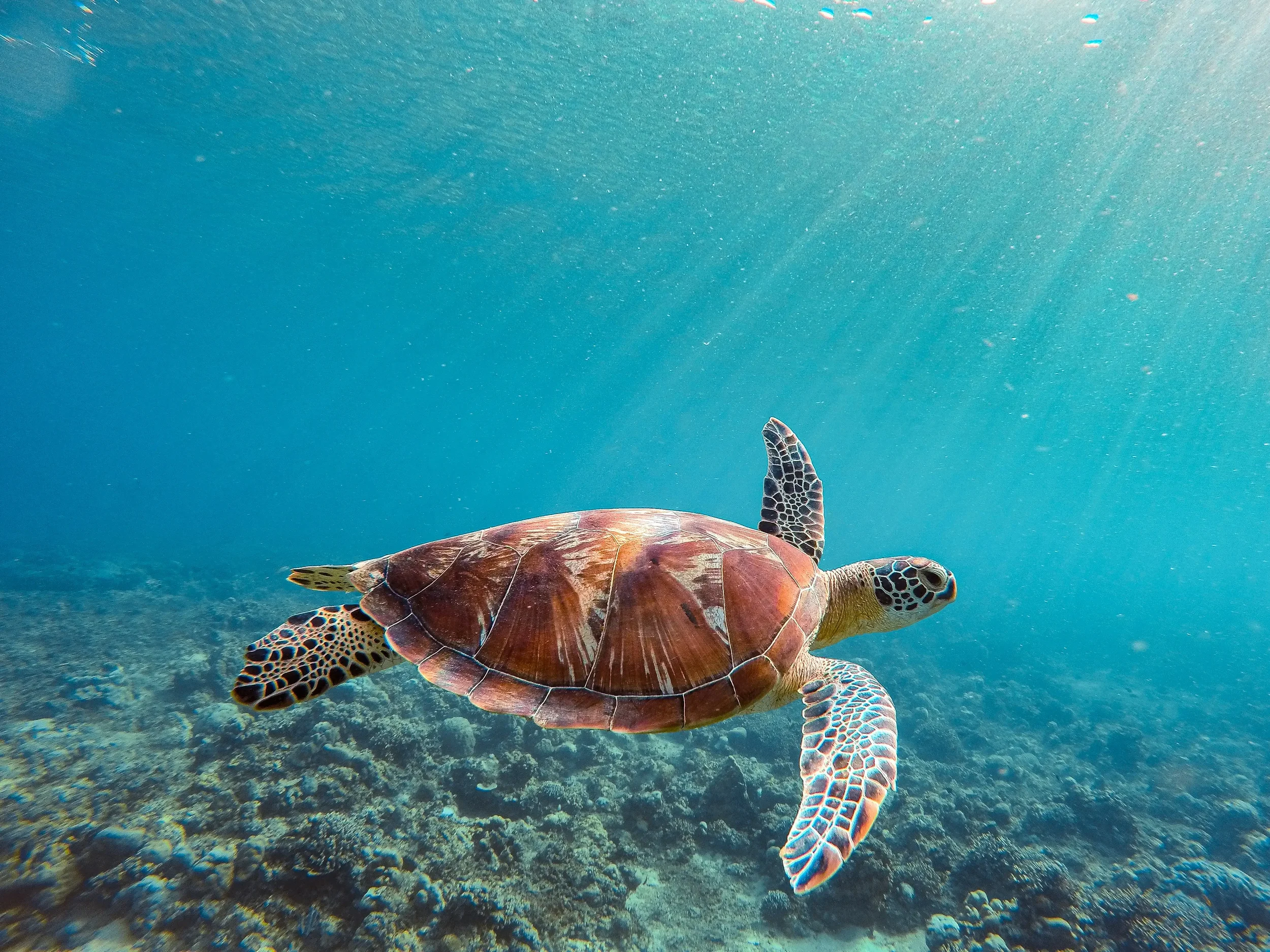INDONESIA
-
With over 17,000 islands, Indonesia is vast, varied, and impossible to see all in one trip — which just means there’s always more to come back for.
Most travelers start in Bali, drawn to its beaches, surf breaks, yoga retreats, and the digital nomad scene. From there, you can head to the Gili Islands for snorkeling and sunset parties, or to Lombok for volcano hikes and a quieter atmosphere.
Java has ancient temples like Borobudur, buzzing cities such as Yogyakarta, and the dramatic landscapes of active volcanoes. Further afield, Sumatra and Flores are known for wildlife, rugged beauty, and a slower, more solitary kind of travel. And then there’s Komodo National Park — home to the famous dragons and some of the best diving in the region.
Getting around usually involves a mix of budget flights, ferries and motorbikes. The food is fiery, the culture deeply spiritual, and the pace whatever you make of it.
With waterfalls, waves, rice terraces and reefs, Indonesia has it all!
-
Indonesia, an archipelago spanning the equator, experiences a predominantly tropical climate with consistent warm temperatures and high humidity year-round. However, weather patterns vary significantly across its thousands of islands, primarily divided into distinct wet and dry seasons.
General Overview:
Most of Indonesia experiences two main seasons: the dry season from May to September, and the rainy season from October to April. Temperatures typically range from 22°C to 32°C (72°F to 90°F) along the coast, with cooler temperatures at higher elevations. The sea remains warm year-round, ideal for water activities.
Regional Breakdown:
Bali, Java & Nusa Tenggara (Lombok, Gili Islands, Flores, Komodo):
Dry Season (April - October):This is the most popular and best time to visit. You can expect plenty of sunshine, blue skies, and ideal conditions for beaches, hiking and exploring. May, June, and September often offer excellent weather with fewer crowds than peak months like July and August.
Rainy Season (November - March): While temperatures remain warm, expect heavier rainfall, especially from December to February. January is typically Bali's wettest month. Afternoon thunderstorms are common, but there are often periods of clear skies. Some outdoor activities like volcano trekking may be more challenging due to slippery trails.
Sumatra:
Sumatra's climate differs as the equator cuts through the island:
North Sumatra (e.g., Medan, Bukit Lawang): Tends to be more tropical with rainfall year-round, though October to January generally see the heaviest rain.
South Sumatra (e.g., Palembang): Experiences a more distinct dry season from April to October and a wet season from November to March.
Best Time to Visit: Generally, the dry season from May to September is preferable, though be prepared for occasional short, heavy showers. Travel can be more difficult during the wet season due to potential flooding.
Important Tip:While the dry season is generally recommended for most of Indonesia, even during the rainy season you can often find periods of sunshine. If you're looking for fewer crowds and potentially lower prices, traveling during the shoulder months, or even the early part of the rainy season, can be a good option, provided you're flexible with your plans and prepared for rain.
-
Indonesia:
UK, EU & US passport holders:
Eligible for Visa on Arrival (VoA) — 30 days.
Cost: Around 500,000 IDR (approximately $35 USD), payable at the airport or online in advance.
Online Application (Highly Recommended): Apply for your e-VOA online at https://molina.imigrasi.go.id before arrival. While not strictly mandatory to apply 48 hours in advance, completing it beforehand significantly streamlines your entry process.
Extendable:
Your VoA can be extended once for 30 more days, allowing a total stay of 60 days. You must visit a local immigration office to apply for the extension, ideally within 7-10 days of your arrival to allow for processing time.
Longer Stay?
If you plan to stay longer than 60 days, apply for a 60-day Tourist Visa (B211A Visa) from an Indonesian Embassy or Consulate before entering Indonesia. This visa is typically extendable up to twice, allowing a total stay of 180 days.
Requirements:
Passport Validity: Passport valid for 6+ months from your arrival date.
Onward Ticket: Proof of onward travel (e.g., a return or exit ticket) is sometimes requested upon entry.
Electronic Customs Declaration (ECD): All passengers must complete an Electronic Customs Declaration (ECD) online at https://ecd.beacukai.go.id/ before arrival. It can be filled out up to 2 days (72 hours) before your flight.
Bali Tourism Levy (for Bali arrivals only): A mandatory tourism levy of 150,000 IDR (approx. $10 USD) applies to international tourists entering Bali. This can be paid online in advance at https://lovebali.baliprov.go.id/ or at payment counters upon arrival at Bali's airport/seaports.
-
Currency: Indonesian Rupiah (IDR)
Cash is widely used, though you can often pay by card in Bali, Jakarta, or big chains.ATMs & cards:
Use BNI, BCA, or Mandiri ATMs – they accept foreign cards and have decent fees.
Avoid Euronet ATMs (high fees and bad exchange rates).
Withdraw larger amounts (some ATMs allow up to 2.5 million IDR).
Changing money:
Skip airport exchanges. Use authorized money changers with “no commission” signs.
Count your money in front of them to avoid scams.
Typical daily backpacker budget:
150,000–400,000 IDR/day ($10–$25 USD) – this should cover hostels, local food, ferry or scooter and basic activities.Tips:
Bali has better card infrastructure; other islands rely on cash.
Use apps such as GoJek/Grab for transport to avoid scams.
Carry coins/small bills for local warungs (small local shops or cafes) and street vendors.
Main Destinations



